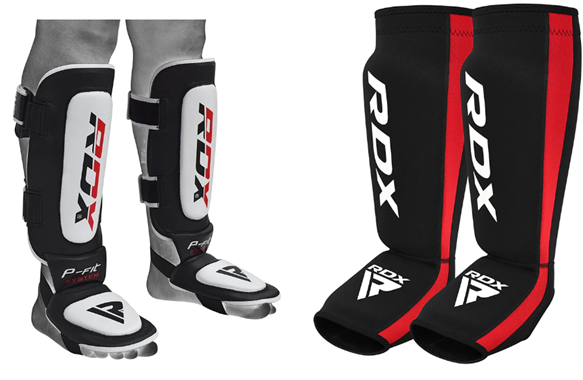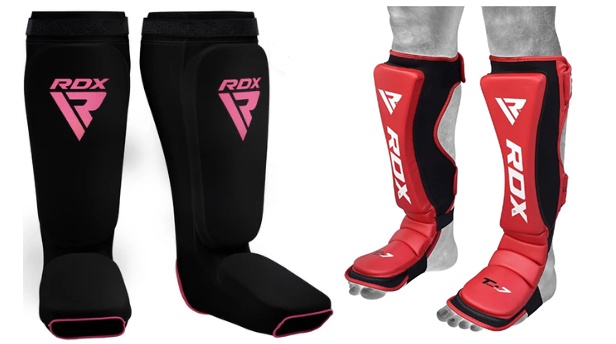hin guards are an essential piece of equipment for athletes participating in sports like soccer, hockey, and martial arts. They are designed to protect the lower legs from impacts, collisions, and potential injuries during game play. In this comprehensive guide, we'll delve into the world of shin guards, exploring their history, types, importance, selection criteria, maintenance tips, and much more.
History of Shin Guards:
Shin guards have a long and storied history, dating back to ancient times when soldiers used various forms of leg protection in combat. The earliest known shin guards were made of materials like leather or metal and were primarily used by warriors to shield their legs from enemy attacks.
As sports evolved, so did the design and materials of shin guards. In the late 19th century, soccer players began using rudimentary shin guards made of padded leather. Over the years, advancements in technology and materials have led to the development of lighter, more flexible, and highly protective shin guards.
Types of Shin Guards:
Shin guards come in various styles, each offering different levels of protection and comfort. The most common types include:
Slip-in Shin Guards:
These shin guards are lightweight and slip directly into the player's socks. They are favoured for their mini malistic design and ease of use.
Sleeve Shin Guards:
Sleeve shin guards feature a sleeve that wraps around the player's leg, holding the guard in place. They provide a snug fit and are popular among professional athletes.
Ankle Shin Guards:
Ankle shin guards offer additional protection to the ankle area, reducing the risk of sprains and injuries during game play.
Combination Shin Guards:
Combination shin guards combine elements of slip-in and sleeve guards, offering both convenience and added protection.
Importance of Shin Guards:
Shin guards play a crucial role in injury prevention on the field. They absorb impact forces, reducing the risk of fractures, bruises, and other lower leg injuries. Additionally, shin guards provide players with the confidence to play aggressively without fear of getting hurt.
How to Choose the Right Shin Guards:
Selecting the right shin guards is essential for comfort and protection. Consider the following factors when making your choice:
Size and Fit:
Ensure that the shin guards fit snugly around your lower leg without restricting movement.
Material:
Opt for shin guards made of lightweight, durable materials like fibreglass, plastic, or foam.
Protection Level:
Choose shin guards with adequate padding and protection to shield your legs from impact.
Proper Way to Wear Shin Guards:
To maximize protection, wear your shin guards properly. Place them securely over your shins and ensure that they cover the entire area from your ankle to just below your knee. Fasten any straps or sleeves tightly to prevent slippage during play.
Maintenance and Care Tips:
Taking proper care of your shin guards is essential to ensure their longevity and effectiveness
Cleaning:
After each use, wipe down your shin guards with a damp cloth to remove sweat, dirt, and grime. Use mild soap if necessary, but avoid harsh chemicals that could damage the material.
Drying:
Allow your shin guards to air dry thoroughly after cleaning. Avoid leaving them in direct sunlight or near a heat source, as excessive heat can cause the material to deteriorate.
Deodorizing:
To keep your shin guards smelling fresh, sprinkle baking soda inside them and let it sit overnight. Alternatively, you can use specialized sports equipment deodorizers.

Storage:
Store your shin guards in a cool, dry place away from direct sunlight when not in use. Avoid leaving them in your sports bag for extended periods, as this can promote the growth of bacteria and meld.
Avoiding Impact:
While shin guards are designed to protect your legs during sports activities, they are not indestructible. Avoid dropping them or subjecting them to unnecessary impact, as this can weaken the protective padding.
Inspect Regularly:
Periodically inspect your shin guards for any signs of wear and tear, such as cracks, tears, or loose straps.
Proper Fit:
Make sure your shin guards fit properly and securely. Adjust straps as needed to ensure a snug and comfortable fit, which will also help prevent them from shifting during activity.
Follow Manufacturer's Instructions:
Different types of shin guards may have specific care instructions provided by the manufacturer. Always follow these instructions to ensure proper maintenance and longevity.
By following these maintenance and care tips, you can prolong the life of your shin guards and ensure they continue to provide optimal protection during sports activities.
Common Misconceptions about Shin Guards:
There are several myths surrounding shin guards, such as the belief that thicker padding equals better protection. In reality, the effectiveness of shin guards depends more on their design and fit rather than the thickness of the padding.
Advancements in Shin Guard Technology:
Modern shin guards incorporate advanced technologies like impact-absorbing foams, shock-resistant materials, and ergonomic designs to provide superior protection and comfort for athletes.
Shin Guards in Different Sports:
While soccer is the most common sport associated with shin guards, they are also used in other sports like hockey, rugby, and martial arts to protect against impact injuries.
Shin Guards for Children:
It's crucial for young athletes to wear properly fitted shin guards to protect their developing bones and muscles from injury. Look for youth-specific shin guards that offer adequate protection without hindering movement.
Famous Players' Preference on Shin Guards:
Many professional athletes have their preferences when it comes to shin guards, with some favouring lightweight slip-in guards, while others opt for more substantial sleeve guards for added protection.
DIY Shin Guard Alternatives:
For those on a budget or looking for creative alternatives, there are DIY options for making shin guards using materials like cardboard, foam, and duct tape. While not as effective as commercially available guards, they can provide temporary protection in a pinch.
Conclusion:
Shin guards are indispensable for athletes of all levels, providing vital protection against lower leg injuries during sports activities. By choosing the right shin guards and wearing them properly, athletes can enjoy greater confidence and safety on the field.


No comments yet